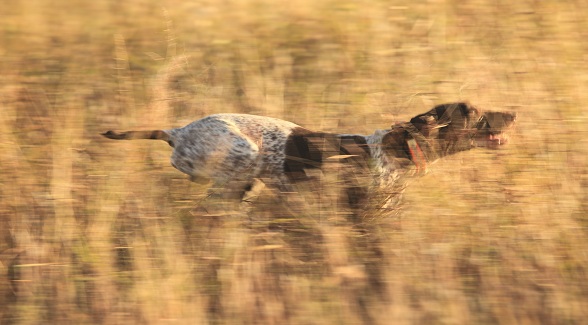
By Henry Chappell
The German shorthair lineage began with the old Spanish pointer — progenitor of the modern pointer — crossed with the bloodhound for scenting ability, foxhound for speed and endurance, and, finally, the pointer. The result was a large, powerful, methodical breed that pointed both furred and feathered game, retrieved from land and water, trailed wounded big game, and even tracked and bayed wild boars.
German shorthairs began to trickle into the US in the 1920s, and found favor with hunters who wanted close-working, easily trained pointing dogs. Most American hunters, however, grounded in a tradition of stylish, big-running, pointers and setters, found the shorthair’s methodical, houndish working style less than inspiring.
After World War II, many of the same economic forces that gave rise to the versatile breeds in Europe — urbanization, shrinking habitat, increased leisure time, and a burgeoning middle class — stimulated interest in multipurpose hunting dogs of all types. Devoted American breeders worked to adapt the shorthair to American conditions while retaining the breed’s versatility.
As a result, today’s hunter can choose from an abundance of excellent German shorthair bloodlines and working styles, from fairly close-ranging dogs that excel at grouse, woodcock, and pheasant hunting to stylish, big runners that scour the countryside for quail and also retrieve doves and fetch ducks from creeks and stock tanks.
Do:
- Pay close attention to bloodlines. Some shorthairs rival English pointers in range and speed, and may be “too much dog” for the average hunter.
- Make your pup a member of the family. German shorthairs form tight bonds.
- Train with firmness and consistency. True to their hound and pointer ancestry, German shorthairs are very intelligent and adept at bending rules.
Don’t:
- Expect your German shorthair to do the work of a Labrador or Chesapeake Bay retriever. The breed is best-suited for fetching from creeks and ponds in moderate conditions.




